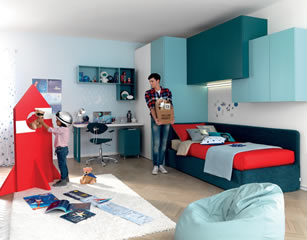 As for sofas, the materials available are as numerous as they are different. Thus, these different coatings make it possible to obtain very interesting styles, classic or resolutely modern, and offer sensations allowing everyone to be satisfied. Indeed, if some like the contemporary side of PVC, others prefer the softness of cotton or authentic leather … but it must be admitted that, both in terms of quality and in practice (maintenance in particular), not all of these materials are created equal. Here is a quick summary of the different materials, their advantages and disadvantages:
As for sofas, the materials available are as numerous as they are different. Thus, these different coatings make it possible to obtain very interesting styles, classic or resolutely modern, and offer sensations allowing everyone to be satisfied. Indeed, if some like the contemporary side of PVC, others prefer the softness of cotton or authentic leather … but it must be admitted that, both in terms of quality and in practice (maintenance in particular), not all of these materials are created equal. Here is a quick summary of the different materials, their advantages and disadvantages:
The natural fabric: This is most often cotton. Sofas with a fabric covering have the advantage of being relatively inexpensive to buy, and of being available in many colors, sometimes even with nice patterns. They are also the most likely to have removable covers, which can greatly facilitate cleaning, especially when you have children or pets. Fabric sofas also have the advantage of not attracting dust, and can be particularly comfortable, even warm, when they have wool in them. However, it may be wise to choose a fabric treated against stains, or to treat your fabric sofa yourself with a special spray, especially if it does not come off.
Synthetic fabric: It offers many possibilities, even that of imitating leather, without reproducing its constraints. Easy to maintain, PVC sofas often only need a simple wipe of the sponge, even if your little one has spread the spread! Other synthetic materials offer very nice possibilities such as alcantara and its peach skin feel, and some are even machine washable. Synthetic fabrics are often more durable and inexpensive. On the other hand, they often come from the petrochemical industry, which does not coincide very well with the ecological awareness of recent years.
Leather: An authentic material par excellence, leather lends itself to many variations in style. Available in many colors, either tinted in the mass or as a colored coating. Different types of tanning give more or less regular appearances, and the treatment can also make the leather more or less sensitive to light, water and stains. But in general, the leather sofa requires a minimum of maintenance to remain beautiful. It is necessary to dust often and to bang on the cushions and the seat regularly to avoid the unsightly folds, which would risk to settle in a permanent way. Sometimes it is necessary to nourish the leather with a special lotion to help it maintain its suppleness. Finally, be careful with denim clothes, which particularly damage the leather in the event of friction. Leather may be ideal for your sofa if someone in your family is prone to allergies, as it is in itself an allergic material, and it is completely unassailable by dust mites.
Consider all the aspects of these materials, and wear your choice on a sofa that really looks like you.





